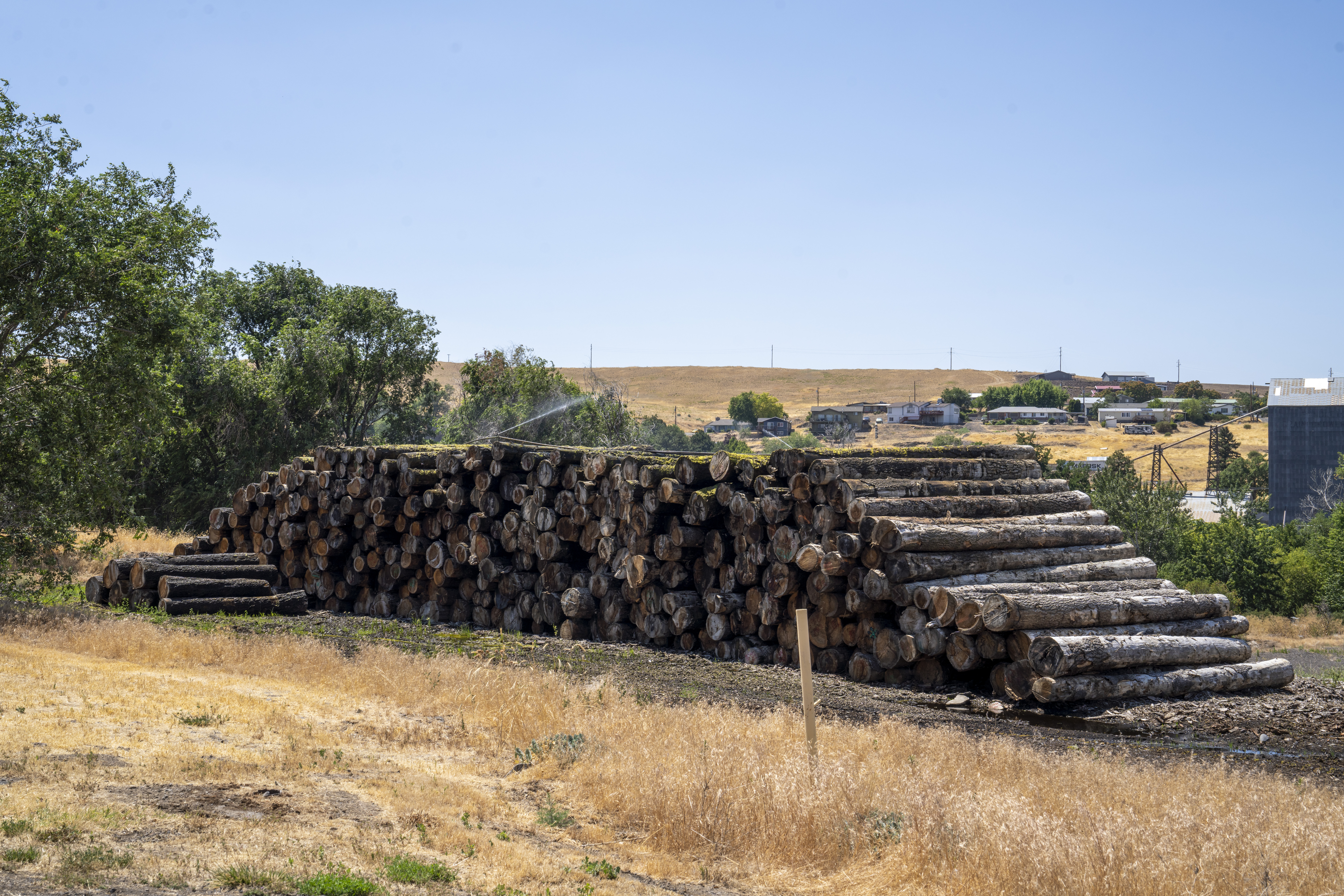Shutting down the Pilot Rock sawmill
Published 6:00 am Friday, July 18, 2025



PILOT ROCK — Every workday was basically the same for Jamie McCall for nearly 37 years. He would arrive at 5 a.m., have a quick team meeting and work until 1:30 p.m., when he went home to his wife, children and now grandchildren.
Every workday was the same, that is, until July 1, when Woodgrain, the company he worked for, announced it shut down its sawmill in Pilot Rock.
“It used to be really happy,” he said. “We’d all talk at break and stuff, but the last couple weeks there isn’t much talk.”
Trending
McCall, the head sawyer for the mill, said he was shocked when his boss told the crew about the 62 layoffs and the mill shutting down, which will go into effect on or after Sept. 1. Woodgrain said the closure is due to market pressures.
“It was a real shock because we’re the No. 1 mill in this region and nobody knows exactly why we got shut down,” he said. “We’re the only one that can do the bigger logs, oversized logs.”
The mill can process up to 52-inch logs, though often it is cutting smaller ones between 15 and 20 inches in diameter. Woodgrain’s other mills in the region — in La Grande and Emmett, Idaho — cut logs up to about 34 inches in diameter. The sister locations are usually cutting logs less than half that, sometimes as small as 6 inches in diameter, according to the Emmett location.
According to Tony McKague, Woodgrain’s log procurement manager, it’s not that La Grande can’t cut the big logs — McKague said it can also cut up to 52 inches — the location is just less efficient with the bigger ones. Pilot Rock, he said, can run a larger volume of big logs compared to La Grande, which is better with smaller logs.
However, because La Grande has two machine centers versus Pilot Rock’s one, La Grande “can do both (sizes) better” than Pilot Rock can, McKague said. He added that currently, the two mills each process about 25-30 million board feet per year of log-scale volume.
“By losing Pilot Rock, obviously we’re losing a lot of volume out of the system,” he said. “At this point, with markets the way they are, we’re not looking at increasing La Grande’s volume, like by adding a shift.”
Trending
Although the mills process similar amounts of board feet per year, the Pilot Rock sawmill is apparently doing the best out of the three.
McCall said he knows they’ve been profitable in recent history, but even in June 2025, when none of Woodgrain’s three mills made profits, he said, they lost the least.
The mill in Emmett lost about $350,000 and La Grande’s lost about $150,000, according to McCall and other employees. Comparatively, Pilot Rock lost $1,400.
“A thousand versus $350,000, and they say it’s the market,” McCall said. “I say it’s (explicative). They won’t give us a real reason.”
McCall and his colleagues, Rana Meek, Ricky Knight and Marty McKague, stayed after work for a while Friday afternoon, July 11, to discuss how the layoffs and closure hit them.
“I don’t know what it’s gonna do to the community,” Meek said.
“It’s gonna tear it up,” said Knight, an edgerman who’s been at the sawmill for 36 years.
The sawmill is the largest employer in Pilot Rock. According to Teri Bacus, city recorder, the city was notified of the closure with a letter.
“It’s been sold and bought many times, so we don’t know what the future is for it,” she said. “They haven’t announced anything official about what’s going to happen after Sept. 1.”
Knight said the city will suffer the loss of the mill’s taxes. And on a more personal level, the employees of the mill are worried about losing their benefits.
The ripple effects
McCall said his wife, Alissa, is considering getting a second job because any other position he finds is likely to pay less, even if it comes with benefits, as he hopes. The benefits from his job are how Alissa’s able to work without benefits at the high school serving lunch, he said.
“She’s gonna have to make up the difference,” McCall said.
Not only are there families who rely on the pay and benefits of the mill, employees also worry about not having other skills to find new jobs.
McKague, who works cleanup at the mill, has only worked there for five months, but he drives about 45 minutes every day to work. He’s not sure where he’ll go or what he’ll try to learn once he’s laid off. Until then, he’s worried about all the people leaving and whether the mill will even be able to keep going between now and the end of September.
“We were already short on people,” he said.
The mill employees each must decide whether to stay or go. They still have insurance and still have a job, but there is an expiration date on both. Some skilled laborers, including the mill’s electricians, are leaving before the closing date, according to McCall and his colleagues.
“I think the reason why most of us are staying is we don’t know where we’re going,” McCall said.
Meek has worked at the mill on and off for 14 years and works as a green grader and trimmer.
She said she’s not sure what she’ll do, but she expects to maintain her role until the mill shuts down since other jobs will likely have lower pay. If she does stay, she and any other employees who are still there will receive a month’s severance pay.
“For a lot of us,” Meek said,” this is what we know.”












